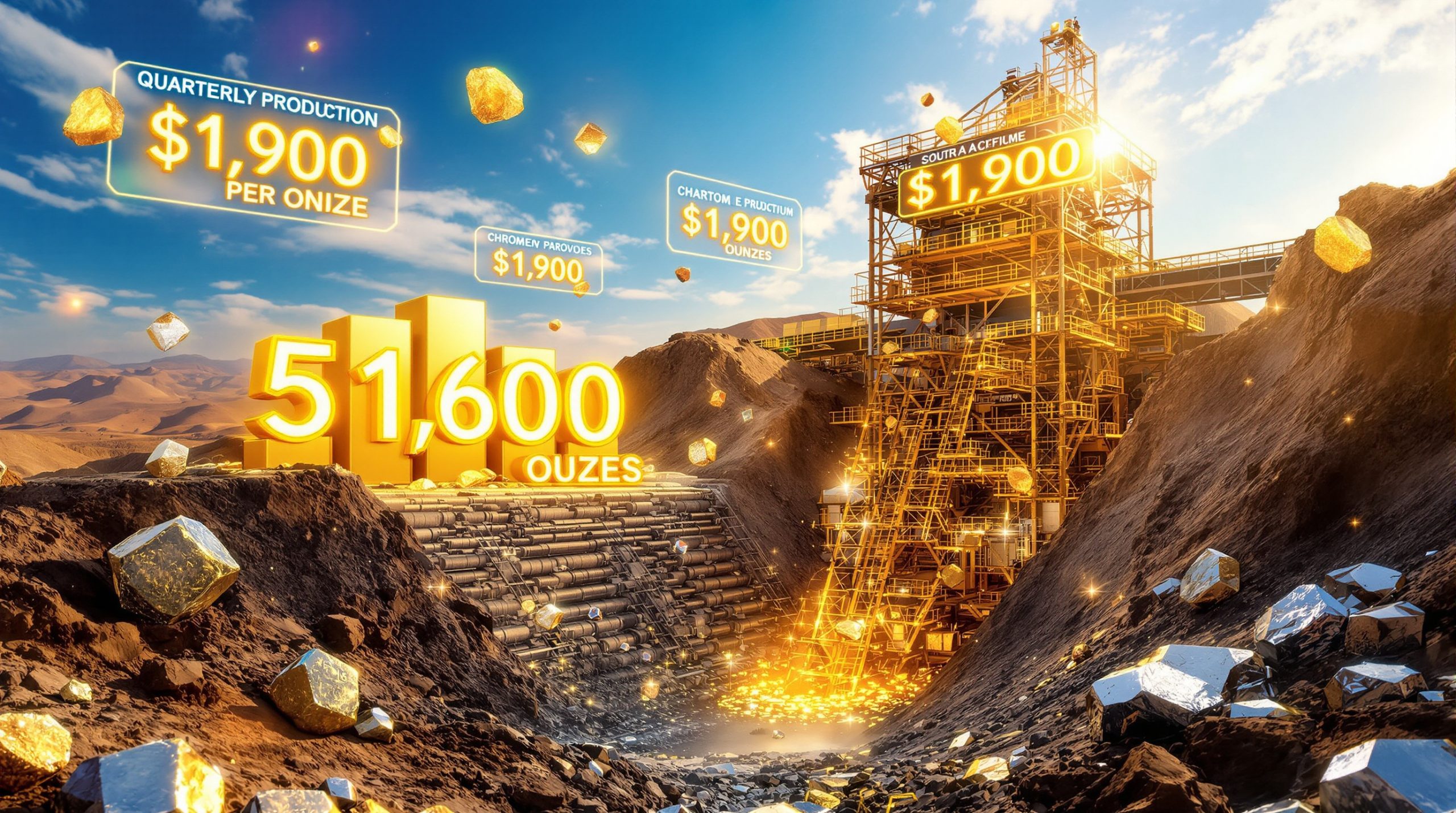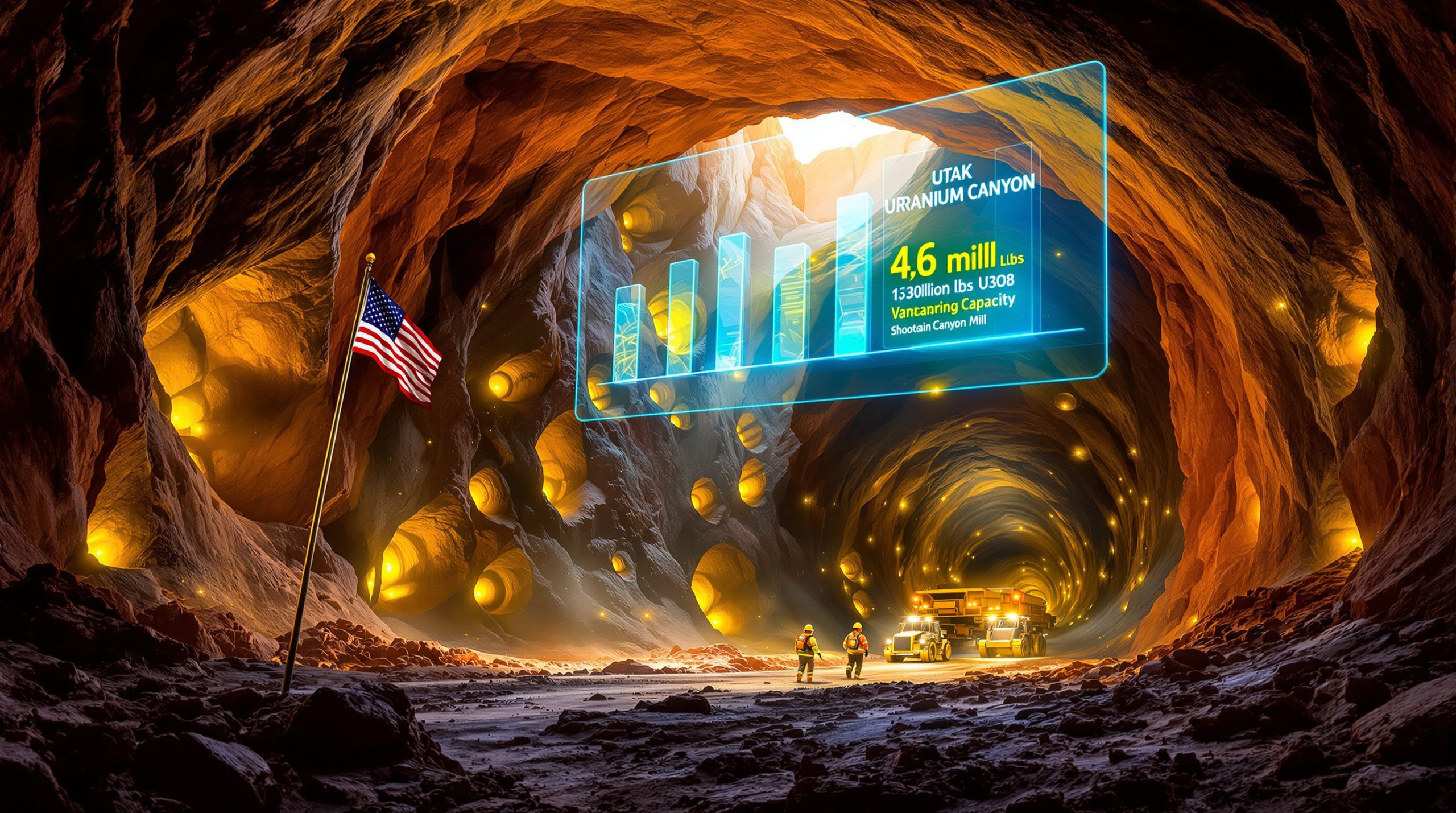Understanding China's Strategic Approach to Rare Earth Mineral Discovery
China's systematic expansion of mineral exploration represents a calculated response to global supply chain vulnerabilities and Western decoupling initiatives. The nation's geological survey programs have evolved from traditional resource mapping to strategic asset acquisition, targeting elements essential for technological sovereignty and industrial competitiveness. This expansion in china rare earth mineral exploration reflects Beijing's determination to maintain dominance in critical technology supply chains.
According to China's Ministry of Natural Resources, geological exploration investment reached ¥116 billion ($16.3 billion) in 2024, marking the fourth consecutive annual increase. This surge reflects Beijing's determination to fortify domestic control over strategic minerals, particularly rare earths, lithium, and other critical inputs essential to electrification, defence technologies, and green manufacturing.
What Drives Beijing's Accelerated Geological Investment Strategy?
The driving force behind China's accelerated china rare earth mineral exploration stems from multiple strategic imperatives. First, the nation seeks to maintain its dominant position in global supply chains while reducing dependence on foreign mineral imports. Furthermore, ongoing trade tensions and Western de-risking efforts have intensified Beijing's focus on supply chain resilience.
The exploration strategy also supports China's ambitious clean energy transition goals. With the world's largest electric vehicle market and renewable energy manufacturing base, securing stable supplies of neodymium, dysprosium, and lithium becomes critical for maintaining industrial competitiveness. Consequently, the critical minerals energy transition directly benefits from China's comprehensive exploration initiatives.
Key Investment Metrics Behind China's Exploration Surge
| Investment Category | 2024 Figures | Strategic Focus |
|---|---|---|
| Total Geological Exploration | ¥116 billion ($16.3B) | Fourth consecutive annual increase |
| Five-Year Plan Total | ¥450 billion ($63B) | Sustained long-term commitment |
| New Deposit Discoveries | 150 total deposits | 49 large, 54 medium, 47 small |
| Mining Sector Fixed Assets | 10.5% increase | Infrastructure and processing capacity |
The ¥450 billion ($63 billion) total spending under the 14th Five-Year Plan demonstrates sustained commitment to geological exploration. This investment pattern suggests China views mineral security as a long-term strategic priority rather than a cyclical market opportunity.
Which Rare Earth Elements Are Driving China's Exploration Priority?
China's recent geological campaigns have yielded significant discoveries across both light rare earth elements (LREEs) and heavy rare earth elements (HREEs). The exploration success in fluorite, lithium, and associated rare earth deposits demonstrates a coordinated approach to securing the entire value chain from extraction to processing.
In 2024 alone, China discovered 150 new mineral deposits, including substantial finds in fluorite and lithium that each tallied eight or nine new discoveries. This extraordinary rate of discovery suggests well-funded, coordinated geoscience campaigns across multiple provinces. However, international competitors implementing lithium industry innovations face significant challenges matching China's systematic approach.
Light vs Heavy Rare Earth Element Discovery Patterns
The distinction between light and heavy rare earth elements significantly impacts China's exploration priorities. Light rare earth elements, including neodymium and praseodymium, are essential for permanent magnet production and represent the largest volume segment of rare earth demand.
Heavy rare earth elements, though produced in smaller quantities, command higher prices and possess unique technological applications. For instance, elements like dysprosium and terbium are irreplaceable in high-performance magnets and advanced display technologies, making their secure supply critical for China's technology sector.
Strategic Mineral Categories Under Active Development
Critical Technology Elements:
• Neodymium and dysprosium for permanent magnets
• Europium and terbium for display technologies
• Yttrium for advanced ceramics and superconductors
Battery and Energy Storage Materials:
• Lithium carbonate and hydroxide production capacity
• Cobalt and nickel co-location opportunities
• Graphite and rare earth phosphate deposits
The exploration results showed particular strength in strategic and emerging minerals, including rare earths, lithium, zirconium, hafnium, and helium. Moreover, China's dominant positions in tungsten, molybdenum, antimony, fluorite, and graphite were further strengthened through these discoveries.
How Does China's Exploration Compare to Global Competition?
China's systematic approach to china rare earth mineral exploration significantly outpaces international competitors in both scale and integration. While Western nations have increased rare earth exploration budgets, China's state-directed funding combined with private sector participation creates exploration volumes that exceed international competitors by substantial margins.
The coordination between central planning and state-owned enterprise implementation provides China with advantages that market-driven approaches struggle to match. Additionally, China's export restrictions create additional barriers for international competitors seeking to establish alternative supply chains. Major players like China Northern Rare Earth Group execute exploration programs that align with national strategic objectives while maintaining commercial viability.
Regional Distribution of New Rare Earth Discoveries
China's 2024 exploration results reveal concentrated activity across multiple provinces, with Inner Mongolia, Sichuan, and Jiangxi leading in terms of deposit size and strategic value. This geographic diversification reduces single-point-of-failure risks while maximising processing efficiency through regional specialisation.
Inner Mongolia continues to dominate light rare earth production through the Bayan Obo deposit, while southern China provinces contribute heavily to heavy rare earth supplies through ion-absorption clay deposits. This regional distribution allows China to optimise extraction techniques specific to different geological formations.
Comparative Analysis: China vs International Exploration Spending
China's integrated approach combines exploration, processing, and manufacturing capabilities under coordinated state direction, creating competitive advantages that purely market-driven international efforts find difficult to replicate within comparable timeframes.
International rare earth projects typically require 7-15 years from discovery to commercial production, giving China substantial first-mover advantages. The complexity of rare earth processing, combined with environmental regulatory challenges, creates additional barriers for non-Chinese competitors. Therefore, mining industry innovation becomes crucial for international players to compete effectively.
What Are the Geopolitical Implications of China's Rare Earth Dominance?
Beijing's exploration expansion directly supports its export restriction policies, creating buffer capacity that allows for selective supply management without compromising domestic industrial needs. The discovery of 150 new deposits in 2024 provides additional negotiating power in trade discussions and technology transfer agreements.
China currently controls approximately 85-95% of global rare earth processing capacity and 60% of mining operations. The 2024 exploration expansion is designed to maintain this dominance while increasing strategic reserves for future geopolitical leverage. Recent China's tightened export controls demonstrate how supply concentration creates geopolitical risks for importing nations.
Export Control Mechanisms and Supply Chain Leverage
China's export control mechanisms extend beyond simple quantity restrictions to include technology transfer limitations and processing equipment controls. By maintaining control over both raw material extraction and downstream processing technologies, Beijing creates multiple leverage points in global supply chains.
The recent exploration surge provides China with the domestic production capacity needed to implement selective export policies without disrupting its own industries. This capability becomes particularly valuable during trade disputes or technology competition with Western nations. Furthermore, executive mineral controls by other governments highlight the strategic importance of securing diverse supply sources.
Western Response Strategies and Alternative Supply Development
International efforts to establish non-Chinese rare earth supply chains face significant challenges in matching China's integrated approach to exploration, processing, and manufacturing. Countries like Australia, Canada, and the United States possess significant rare earth deposits, but lack the processing infrastructure and supply chain integration that China has developed over decades.
The time lag between discovery and commercial production typically ranges from 7-15 years for rare earth projects, giving China substantial advantages in maintaining market position. Environmental regulations and community opposition often extend project timelines in Western jurisdictions, further complicating efforts to establish alternative supply sources.
Which Technologies Benefit Most from China's Rare Earth Expansion?
China's rare earth exploration directly supports its dominance in electric vehicle battery production, wind turbine manufacturing, and solar panel assembly. The integration of rare earth mining with downstream manufacturing creates cost advantages that international competitors struggle to match.
The country's control over critical mineral supply chains extends from raw material extraction through final product assembly, creating what analysts describe as vertical integration that provides both cost advantages and supply security.
Electric Vehicle and Clean Energy Applications
Electric vehicle motors require significant quantities of neodymium and dysprosium for high-performance permanent magnets. China's secure domestic supply of these elements supports its position as the world's largest EV manufacturer while creating potential supply constraints for international competitors.
Wind turbine generators similarly depend on rare earth permanent magnets for efficient operation. China's rare earth supply security directly supports its renewable energy equipment manufacturing capabilities and export competitiveness in global markets. Consequently, modern mine planning becomes essential for competitors seeking to establish reliable supply chains.
Defence and Aerospace Technology Implications
Military applications of rare earth elements include radar systems, missile guidance, and advanced communications equipment. China's secure domestic supply chains provide strategic autonomy in defence technology development while creating potential vulnerabilities for nations dependent on Chinese rare earth exports.
The dual-use nature of many rare earth applications means that civilian technology advancement and military capability development often overlap significantly. China's mineral exploration expansion supports both commercial competitiveness and national security objectives simultaneously.
How Do State-Owned Enterprises Drive China's Exploration Success?
China's rare earth exploration benefits from seamless coordination between central planning and state-owned enterprise implementation. This structure allows for long-term investment decisions that prioritise strategic objectives over short-term profit maximisation.
State-owned enterprises can commit resources to exploration projects with longer payback periods than private companies typically accept, enabling systematic development of mineral resources that align with national priorities.
Coordination Between Government Policy and Corporate Execution
The alignment between government policy and corporate execution creates advantages in resource allocation and project development that market-driven systems struggle to replicate. State-owned enterprises receive clear strategic direction while maintaining operational flexibility to adapt to changing market conditions.
This coordination enables China to pursue exploration strategies that consider national security implications alongside commercial viability, creating a more comprehensive approach to mineral resource development.
Technology Transfer and Innovation Acceleration
Research and Development Integration:
• State key laboratories at major universities and regional institutes
• Proprietary extraction and separation technology development
• Advanced geological survey techniques and satellite mapping
• AI-driven deposit modelling and resource estimation
China's research institutions work closely with state-owned enterprises to develop proprietary technologies for rare earth extraction and processing. This integration accelerates innovation while ensuring that technological advances serve national strategic objectives.
What Are the Environmental and Sustainability Considerations?
China's recent rare earth exploration incorporates advanced environmental management systems, including in-situ leaching technologies and closed-loop processing systems. These improvements address historical environmental concerns while maintaining production efficiency.
The integration of environmental planning from the initial exploration phase represents a significant evolution from earlier approaches that often addressed environmental impacts as afterthoughts to mineral development projects.
Modern Extraction Techniques and Environmental Standards
Advanced extraction techniques now employed in China's rare earth operations include selective leaching methods that reduce waste generation and improve recovery rates. These technologies address both environmental concerns and economic efficiency objectives.
In-situ leaching techniques, particularly applicable to ion-absorption clay deposits in southern China, minimise surface disturbance while extracting heavy rare earth elements. This approach reduces environmental impact while maintaining production capacity.
Rehabilitation and Land Use Planning
New exploration projects integrate land rehabilitation planning from the initial discovery phase, ensuring that mining operations can transition to alternative land uses upon completion. This approach reduces long-term environmental liabilities while supporting local community development.
The coordination of mining activities with regional development planning creates opportunities for post-mining land uses that provide ongoing economic benefits to local communities, improving public acceptance of mineral development projects.
What Does the Future Hold for China's Rare Earth Exploration?
Based on current investment trajectories and geological survey data, China's china rare earth mineral exploration is expected to yield 120-180 new deposits annually through 2030. This discovery rate supports projected global demand growth while maintaining strategic reserve capacity.
The sustained nature of China's geological investment suggests that mineral exploration has become institutionalised as a core component of national economic strategy rather than a cyclical response to market conditions.
Projected Discovery Rates and Production Capacity
China's systematic approach to geological surveying, combined with advanced exploration technologies, positions the country to maintain its leading role in rare earth discovery and development. The application of artificial intelligence and satellite-based geological mapping technologies enhances exploration efficiency while reducing costs.
The integration of exploration activities with processing capacity development ensures that new discoveries can be brought into production efficiently, maintaining China's competitive advantages in global rare earth markets.
Integration with Belt and Road Initiative Projects
China's domestic rare earth exploration complements international resource development through Belt and Road partnerships, creating a global network of Chinese-influenced rare earth supply chains that extend from Central Asia to Africa.
This international expansion creates additional supply security while providing China with influence over global rare earth markets through both domestic production and international partnerships.
Frequently Asked Questions About China's Rare Earth Exploration
How Much of Global Rare Earth Supply Does China Control?
China currently controls approximately 85-95% of global rare earth processing capacity and 60% of mining operations. The 2024 exploration expansion is designed to maintain this dominance while increasing strategic reserves for future market influence.
The distinction between mining and processing capacity is crucial for understanding China's market position. While other countries possess rare earth deposits, China's processing capabilities create bottlenecks that maintain its market control even when raw materials are sourced internationally.
Can Other Countries Compete with China's Rare Earth Production?
While countries like Australia, Canada, and the United States possess significant rare earth deposits, the integrated nature of China's supply chain creates substantial competitive advantages that are difficult to replicate quickly.
The development of alternative supply chains requires significant capital investment, regulatory approvals, and technology development that typically spans decades rather than years. Environmental regulations and community acceptance add additional complexity to non-Chinese rare earth development projects.
What Impact Do Export Controls Have on Global Markets?
China's selective export restrictions on rare earth elements and processing technologies create supply uncertainty that drives up prices and accelerates international efforts to develop alternative sources, though these alternatives remain years away from commercial viability.
Export controls serve both economic and strategic purposes, generating revenue from strategic mineral exports while maintaining leverage in technology competition and trade negotiations with other nations.
Investment Implications and Market Outlook
China's exploration expansion provides supply security for domestic industries while creating potential price volatility in international markets. This dual effect supports Chinese manufacturing competitiveness while generating revenue from strategic mineral exports.
The state-directed nature of China's mineral exploration creates market conditions that differ significantly from traditional commodity markets, where supply and demand dynamics typically drive investment decisions.
Supply Security vs Price Volatility Dynamics
China's ability to maintain stable domestic supplies while creating uncertainty in international markets provides significant competitive advantages for Chinese manufacturers. This capability becomes particularly valuable during periods of trade tension or technology competition.
The coordination between exploration, production, and export policies allows China to optimise mineral resource utilisation for both domestic industrial needs and international market influence simultaneously.
Long-term Strategic Positioning
The sustained investment in rare earth exploration represents China's commitment to maintaining technological leadership in clean energy, defence, and advanced manufacturing sectors. This positioning creates lasting competitive advantages that extend beyond simple resource control.
Disclaimer: This analysis is based on publicly available information and should not be considered as investment advice. Rare earth markets involve significant volatility and geopolitical risks that may affect investment outcomes. Readers should conduct their own research and consult with qualified professionals before making investment decisions.
The integration of china rare earth mineral exploration with broader industrial policy objectives positions China to maintain its dominant role in global technology supply chains for the foreseeable future, creating both opportunities and challenges for international competitors and investors.
Ready to Capitalise on Strategic Mineral Discoveries?
Discovery Alert's proprietary Discovery IQ model delivers real-time alerts on significant ASX mineral discoveries, instantly empowering subscribers to identify actionable opportunities ahead of the broader market. Understand why major mineral discoveries can lead to significant market returns by exploring Discovery Alert's dedicated discoveries page, showcasing historic examples of exceptional outcomes, then begin your 30-day free trial today to position yourself ahead of the market.




